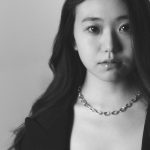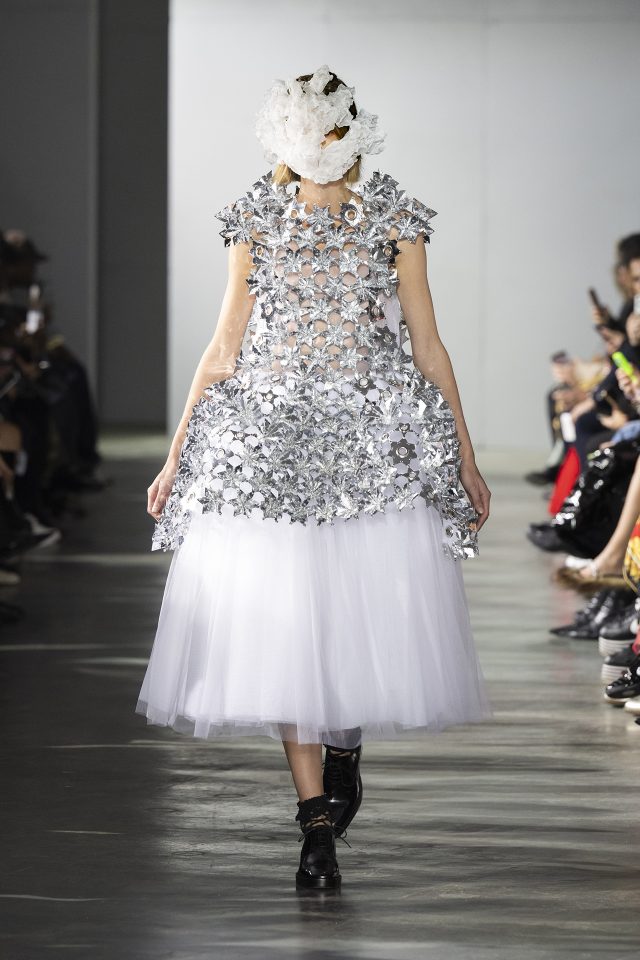『The Business of Fashion』編集長、Imran Amed (イムラン・アーメド) インタビュー
Imran Amed
2006年に設立された『The Business of Fashion (ザ・ビジネス・オブ・ファッション、以後 BoF)』は、ファッションビジネスに携わる世界中の業界人の間で必読とされているブログ。カルト的な人気を誇るこのファッションビジネス・ブログをまとめあげるのは、2011年に英国版『GQ (ジーキュー)』が選ぶ“英国で最も影響力のある男性100人”に選出され、元マッキンゼー出身という異色の肩書きを持つ Imran Amed (イムラン・アーメド) 氏。デジタルファッションの分野の第一線で活躍する彼に話しを聞いた。
『The Business of Fashion』編集長、Imran Amed (イムラン・アーメド) インタビュー
Magazine
*You’ll find the English text after the Japanese.
2006年に設立された『The Business of Fashion (ザ・ビジネス・オブ・ファッション、以後 BoF)』は、ファッションビジネスに携わる世界中の業界人の間で必読とされているブログ。カルト的な人気を誇るこのファッションビジネス・ブログをまとめあげるのは、2011年に英国版『GQ (ジーキュー)』が選ぶ“英国で最も影響力のある男性100人”に選出され、元マッキンゼー出身という異色の肩書きを持つ Imran Amed (イムラン・アーメド) 氏。デジタルファッションの分野の第一線で活躍する彼に話しを聞いた。
—まず自己紹介を少しだけお願いします。
僕の家系はインド系東アフリカ人。母はタンザニアのキリマンジャロ山のふもとで生まれて、僕自身はカナダのロッキー山脈のふもとで生まれました。高校までカナダのアルバータ州最大の都市であるカルガリーで育って、それからモントリオールにあるマギル大学を卒業後、ボストンのハーバード・ビジネス・スクールに通いました。ロンドンに最初に移住したのは1999年ですが、最終的にそこに落ち着いたのは2002年。それ以来ずっとロンドンに住んでいて、最近ようやく英国のパスポートを取得できました。
—ファッションに興味を持ったのはなぜですか?
経営コンサルティングのキャリアから離れると決心してから、クリエイティブ業界のリサーチをしていたんです。そのときファッション業界が一番おもしろそうだなと。クリエイティブなプロセスに敬意を払えるプロの経営者が当時はかなり求められていました。その点において自分がなにか貢献ができるのではないかとおもったのです。でも一番の大きな理由は、華やかなイメージの裏側にあるファッション・ビジネスについてただ知りたかっただけなんです。
—『BoF』を立ち上げた理由と、コンセプトについて教えてください。
最初はコンセプトというもの自体、あまりありませんでした。ファッション業界のビジネスとクリエイティブな面を探求して表現する個人のブログに過ぎませんでした。いまでも、ファッションにおけるクリエイティブとビジネスのバランス、BoFのコンテンツの重要な軸になっています。
—現在、『BoF』は世界でトップレベルの影響力を持つファッションビジネス・サイトですが、人気の理由はなんでしょうか?
おそらく『BoF』の成功に一番おどろいているのは僕自身です。小さな実験的なレベルではじまって、ロンドンにある自宅のリビングで夕方に少し書いていただけなので。いまおもうと、すぐれた情報と分析を兼ねそろえて、意見をしっかりと述べることができるオンラインのファッションビジネス・サイトが求められていたのかも知れませんね。
—ファッションビジネスに関する情報収集はどのように行っていますか?
『Twitter (ツイッター)』で好きなウェブサイトをすべてフォローしています。自分にとってのリアルタイムのニュースフィードです。『New York Times (ニューヨーク・タイムズ)』『Financial Times (ファイナンシャル・タイムズ)』『Economist (エコノミスト)』などが好きですね。
—去年のファッション業界における最大の出来事とは?
Hedi Slimane (エディ・スリマン) がSaint Laurent (サンローラン) で、そしてRaf Simons (ラフ・シモンズ) が Christian Dior (クリスチャン ディオール) で同時期にデビューしましたが、それが2012年のファッション業界で最も重要な出来事だったとおもいます。ハイファッションの世界に大きな変化が訪れました。彼ら2人が、これからどういう風に Saint Laurent と Christian Dior というアイコン的なメゾンを成長させていくのかがたのしみです。
—ファッション業界のデジタル化はすごい勢いで進んでいますが、いまなにに注目をしていますか?
いまデジタル技術が世界規模でファッション業界に変革をもたらしていて、とてもおもしろい時期だとおもいます。特に、Nasty Gal (ナスティー ギャル) や Everlane (エバーレーン)、Warby Parker (ウォービー・パーカー) といったデジタルに強いブランドが、ファッションブランドのあり方を再定義しているところも注目です。伝統的な小売りや卸売りを通しての販売よりもはるかに安い価格で商品を提供していますし。サプライチェーンを管理して、中間業者を通さないことで安価な価格設定を可能にして、なおかつ自分たちの利益を十分に出しています。
—日本のファッション市場についてどう思いますか?気になるブランドやショップはありますか?
日本は大好きです!日本のファッション・ラグジュアリー市場はもう世界最大規模ではないかも知れませんが、それでも世界でも最も洗練されていてハイエンドです。消費者の感度も高い。僕は背があまり高くないので、東京での買い物は最高です。洋服が体に合います。一番好きなブランドは ICHO です。厳選された顧客向けにオーダーメイドの洋服を作る家族経営のブランドで、非常に品質がすぐれていて、ディテールにもこっています。
—COMME des GARÇONS (コム・デ・ギャルソン) や Yohji Yamamoto (ヨージヤマモト) 以降、同じくらい世界に衝撃を与える日本のブランドが出てきていないですが、海外で成功をおさめるために日本のブランドは必要なこととは?
Yohji Yamamoto や COMME des GARÇONS級の新しいブランドはないかも知れませんが、クリエイティブ面で世界のファッション界に影響を与えているブランドはいくつかあるとおもいます。この2ブランドから派生したブランドもいくつかありますよね。Junya Watanabe (ジュンヤ ワタナベ) や Limi Feu (リミ フゥ)、 sacai (サカイ) などです。sacai の阿部千登勢さんは、渡辺淳弥のところで働いていました。日本のファッション市場は、いま欧米で盛り上がっている中級価格帯のブランドを参考にすると良いかも知れません。ALEXANDER WANG (アレキサンダー ワン) や 3.1 PHILLIP LIM (スリーワンフィリップリム)、Tory Burch (トリー バーチ) などがこのカテゴリーに入ります。日本のブランドも、品質を保ちながら、より買いやすい価格設定でユニークなファッションの美的感覚を持ち合わせたアイテムを作ることができれば、海外のファッション業界ともシンクロナイズしやすいでしょう。
—『BoF』以外に別の仕事をしていますか?
ラグジュアリーブランドや新進気鋭のファッションデザイナーたちのアドバイザーをしています。あと、毎年セントラル・セント・マーチンズ・カレッジ・オブ・アート・アンド・デザインでビジネスコースを教えています。
—Imranさんのスタイルアイコンはだれですか?
「自分自身のアイコンになれ」といつも言っています。
—お気に入りのショップはありますか?
オンラインだと Yoox (ユークス) と MR PORTER (ミスター ポーター)。それとパリのL’Eclaireur (レクレルール) が好きです。
—『BoF』の今後の展開について教えてください。
いまいろいろと進行中のおもしろいプロジェクトがあります。とくに、学生のコミュニティと一緒に行っている企画はおもしろいです。注目していてください!
<プロフィール>
Imran Amed (イムラン・アーメド)
ファッションビジネス・アドバイザー・ライター・実業家/『The Business of Fashion (BoF)』の設立者兼編集者で、セントラル・セント・マーチンズ・カレッジ・オブ・アート・アンド・デザインでも教鞭をとる。数々の国際的なファッションコンストで審査員を務め、アントワープ王立芸術アカデミーのファッション科の卒業審査員や、ウィーンのオーストリア・ファッション・アワードの審査員も務めている。2011年には英国版『GQ (ジーキュー)』が選ぶ“英国で最も影響力のある男性100人”、インド版『GQ』の“世界で活躍する最も影響力のあるインド人50人”にも選ばれている。また、英国版『Vogue (ヴォーグ)』の“期待の新人25人”や、 Net-a-Porter (ネッタポルテ) の“グローバル・パワーブロガー・トップ10”にも選出されている。『BoF』の立ち上げ以前は、マッキンゼー・アンド・カンパニーで経営コンサルタントとして働いていて、ハーバード・ビジネス・スクールでMBAを取得している。現在英国とカナダの市民権を持っている。
Launched in 2006, the Business of Fashion (BoF) is a must-read blog with a cult following for people who work in fashion business. BoF has been run by Imran Amed, who was named to British GQ’s list of the 100 Most Influential Men in Britain in 2011. He was previously a management consultant at McKinsey & Co as well. We have managed to catch this leading figure of digital fashion.
—Please tell a bit about yourself / your background.
My family is from East Africa, of Indian descent. My mother was born in the foothills of Mount Kilmanjaro in Tanzania and I was born in the foothills of the Rocky Mountains in Canada. I grew up in Calgary and went to McGill University in Montreal and then to Harvard Business School in Boston. I first moved to London in 1999, but made it my home when I returned in 2002. I have lived here ever since and recently got my British passport.
—What got you into fashion?
I was exploring creative industries after deciding to leave my career in management consulting. Fashion was the most interesting of these industries to me as there was still a need for more professional managers, albeit ones who had a real appreciation for the creative process. I was hoping that this was something I could bring to the industry, but mostly I just wanted to figure out how the fashion business worked behind all the glossy images.
—Why did you start the BoF? What is its concept?
I really did not have a concept at the beginning. It was a personal blog and creative outlet for me to explore my interest in both the business and creative sides of the fashion industry. Today, this balance between creativity and business in fashion remains a core principle for all the content we create.
—The BoF is one of the most influential fashion business sites. What do you think triggered its popularity?
No one was more surprised by the success of BoF than me. It started as a little experiment, writing in the evenings from my living room in London. In hindsight, I think there was a pent- up demand for an online resource with an informed analytical perspective on the fashion business, that is not afraid to state an opinion.
—How do you gather information about fashion business?
I follow all of my favourite sources and websites on Twitter, which is like my real-time news feed. These include the New York Times, FT, and the Economist.
—In your opinion, what were the biggest fashion event last year?
The simultaneous debuts of Hedi Slimane at Yves Saint Laurent and Raf Simons at Christian Dior were the defining moments of fashion in 2012. It represented a real changing of the guard in high fashion. I am excited to see where both of these strong designers take these iconic brands in the years to come.
—The fashion industry is going increasingly digital. What has caught your attention now?
I continue to be fascinated by how digital technology is disrupting and transforming the global fashion industry. In particular, I think it is interesting to observe how digital-first brands like Nasty Gal, Everlane and Warby Parker are redefining what it means to be a fashion brand, and also offering products to consumers at much better value than through traditional retail and wholesale channels. By controlling the whole supply chain and taking out middle man, they can offer better prices, while still earning healthy margins.
—How do you perceive the Japanese fashion market? Any interesting brand or shop?
I love Japan! The Japanese fashion and luxury market may no longer be the biggest in the world, but it is still the most sophisticated and advanced market, and has the most discerning clientele. As a man of small stature, Tokyo is my favourite place to shop. Everything fits! My favourite Japanese brand is called ICHO, and is run by a small family that does bespoke clothing for a select clientele. They have typical Japanese design elements, extremely high quality and attention to detail that is unsurpassed.
—After COMME des GARÇONS and Yohji Yamamoto, there seems to be no Japanese label which made as big impact as they did. What do Japanese brands need to do / learn to succeed internationally?
While there may not be any new mega Japanese brands like Yohji and COMME des GARÇONS, I think here are still several designers who are still having a real creative impact, and some of them come in direct lineage from these Japanese fashion greats. Junya Watanabe (part of the COMME des GARÇONS family) and Yohji’s daughter, Limi Feu, and especially Sacai, whose designer Chitose Abe who herself used to work with Junya. That said, I think the Japanese market could benefit from looking at the rise of mid-priced ‘contemporary’ labels in both Europe and the USA, which are amongst the fastest growing brands in the world – ALEXANDER WANG, 3.1 PHILLIP LIM and Tory Burch all fall into this category. If Japanese brands could market their unique fashion aesthetics at a more affordable price, while retaining quality, it would bring them into better sync with the rest of the fashion industry.
—Do you do anything else apart from the BoF?
I work as an advisor to luxury brands and emerging fashion designers, and teach a business course every year at the Central Saint Martins College of Art & Design.
—Who is your style icon?
I always say: “Be your own icon.”
—What are your favourite places to shop?
Online, I love Yoox and MR PORTER. I also love L’Eclaireur in Paris.
—Where is the BoF heading now?
<Profile>
Imran Amed is a fashion business adviser, writer and entrepreneur, and is Founder and Editor of The Business of Fashion. He is an Associate Lecturer at Central St Martin’s College of Art & Design. He has been invited to sit on juries at international fashion competitions and art colleges including The Royal Academy of Fine Arts in Antwerp and the Austrian Fashion Awards in Vienna. In 2011, Imran was named to British GQ’s list of the 100 Most Influential Men in Britain, Indian GQ’s list of the 50 Most Influential Global Indians, British Vogue’s list of 25 New Fashion Faces to Watch and Net-a-Porter’s top 10 Global Blog Power List. Previously, he was a management consultant at McKinsey & Co. He has an MBA from Harvard Business School and a B.Com from McGill University. He holds British and Canadian citizenship.












